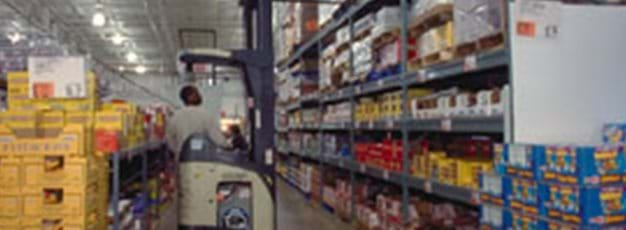Competition Alters the U.S. Food Marketing Landscape

Competitive pressures abound in today’s dynamic food marketing system. The U.S. food market is essentially saturated, dependent on a growing population as well as a declining share of consumer income spent on food. Food companies are using many strategies to compete for a larger share of the pie, including new ways of conducting business, mergers and acquisitions, overseas expansion, and state-of-the-art technology.
To meet consumer preferences and remain competitive, retailers have introduced a wide variety of new products. Nearly 10,000 new food and beverage products were introduced in 2002, with convenience foods and organic and natural foods leading the way. Also, the number of unique items (according to brand, package size, and type) stocked by supermarkets, such as Chef Boy-ar-dee Pizza Crust Mix & Sauce and Kahn’s Honey Cure Deli Ham, rose from 13,000 in 1980 to 37,000 in 2001.
Competitive pressures to deliver specific products to meet consumer demand have changed the way the products move from farmers to consumers. Traditional food wholesalers who buy food from manufacturers and resell to retail food stores are losing ground. Manufacturers such as Coca Cola, Dreyers/ Edy’s Grand Ice Cream, and Frito-Lay deliver their products directly to retail stores and usually arrange them on the shelves. Albertsons, Ahold, and most other large retail chains buy products directly from manufacturers and transport them to retail locations through their own distribution centers. Many food manufacturers/processors have chosen to contract directly with farmers to get the preferred quality and quantity of products.
Krogers, Safeway, and other traditional food retailers face mounting competition from nontraditional retailers, such as Wal-Mart supercenters, and the food-away-from-home sector. In the 1990s, warehouse clubs and supercenters made their presence felt in a big way. By adding massive new stores, these companies increased their share of total food sales from 1.9 percent in 1990 to 8 percent in 2002. Food-away-from-home outlets, including McDonalds and Applebee’s, now account for 46 percent of total food expenditures, up from 33 percent in 1970. In response to these competitive pressures, traditional retailers are turning to mergers and acquisitions to improve their ability to compete.
Manufacturers and distributors are experimenting with new technologies to replenish grocery shelves or out-of-stocks, to quickly serve and better target prospective customers, and to improve information flow and inventory management. For example, a system developed by FreedomPay, Inc., enables customers to make cashless purchases quickly and efficiently and to receive instantaneous loyalty rewards. A wand waved over a sensor at the checkout counter automatically deducts purchase amounts from consumers’ accounts through FreedomPay’s network. The system’s hardware costs significantly less than debit card systems. USA Technologies is one of several companies equipping its vending machines with modems or sensors that relay instant inventory, sales, and other information to better target consumer preferences.
As an alternative to competition in a slowly growing domestic food market, many U.S. food companies are competing globally, choosing to expand by targeting customers (or investing in operations) outside the United States. The U.S. is the world’s largest exporter of processed food. Domestic food companies, including Safeway, Costco, and Krispy Kreme Doughnuts, continue to expand operations overseas.
The U.S. Food Marketing System, 2002, by Michael Harris, Phillip Kaufman, Steve Martinez, and Charlene Price, USDA, Economic Research Service, August 2002

